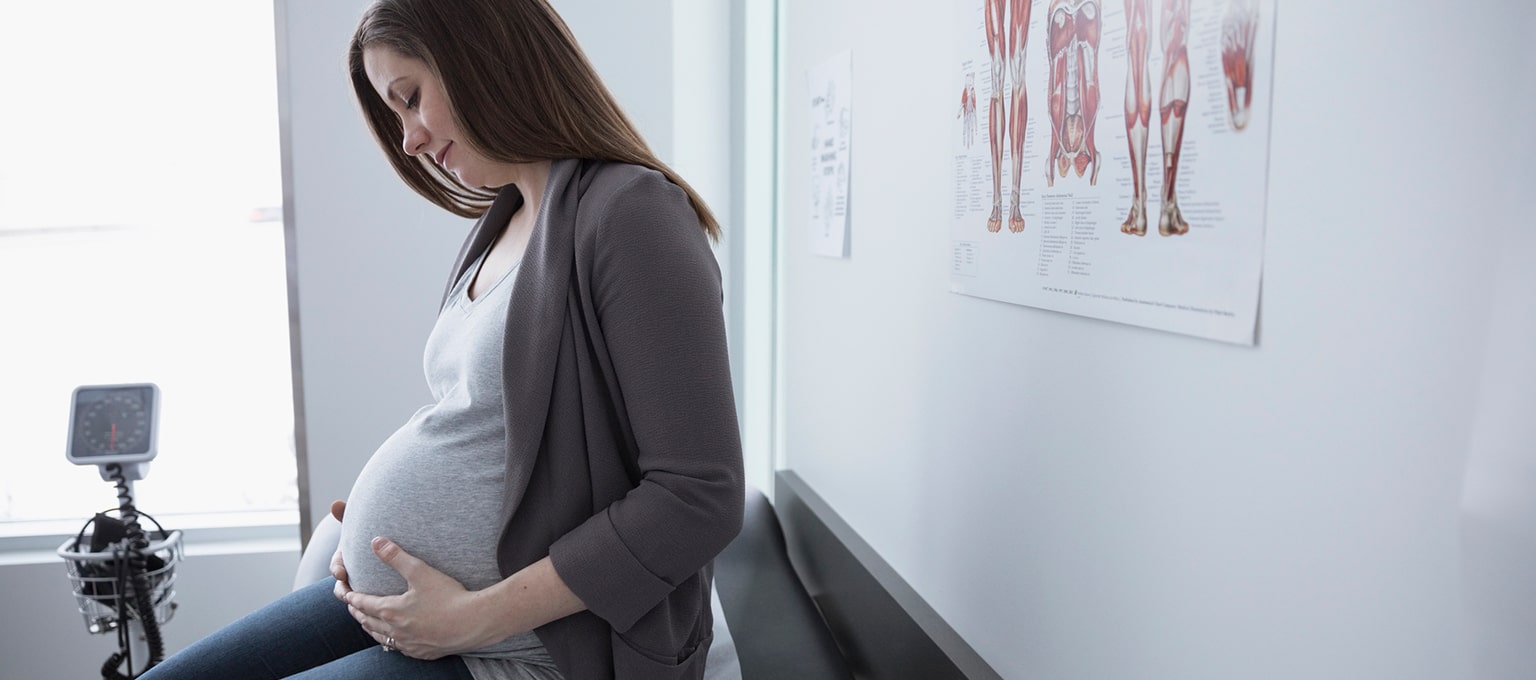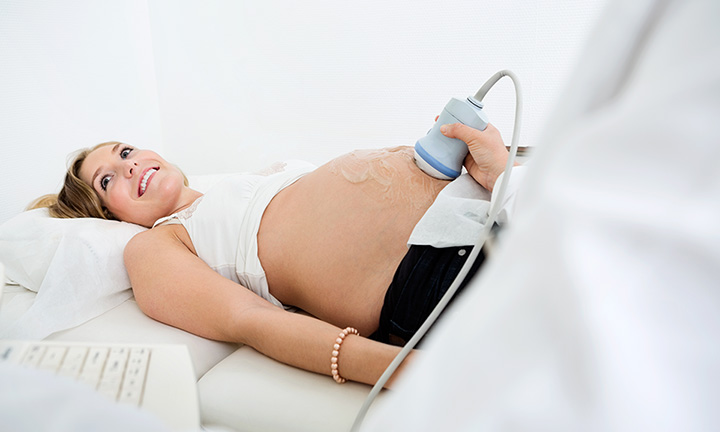
Epidural During Labour: Benefits, Risks & What to Expect
5 min readUpdated March 14, 2025
5 min readUpdated March 14, 2025
When preparing to welcome your little one, you may be thinking about the different pain relief options available for labour. A common choice is the epidural during labour, a method that provides effective pain relief while keeping you alert during delivery. In this guide, we’ll explain what an epidural is, how it works, when it’s typically given and the possible side effects. As you explore your options, you can discuss whether an epidural is right for you with your GP or midwife, ensuring you make the best decision for your personal labour experience.
What Is an Epidural?
An epidural during labour is one of the most common methods of pain relief for childbirth. The main advantage of an epidural is that it helps relieve most of the pain by numbing your lower abdomen and birth canal while allowing you to stay awake and alert throughout labour and delivery. You will still be aware of your contractions and able to push, although you may not be able to walk.
If you're considering an epidural for your delivery, it’s a good idea to discuss it with your GP or midwife during an antenatal visit to confirm whether it’s available at your hospital or birthing centre. You may also include your pain relief preferences in your birth plan. However, it’s important to know that you may change your mind when the time comes; just let your medical team know.
How Does an Epidural Work?
An injection of local anaesthetic is passed into your lower back close to the nerves which carry the pain you feel during labour. The epidural works by blocking these nerve messages, causing numbness which varies according to the amount of local anaesthetic given. The level of pain relief you experience from an epidural depends on several factors, including the type of drug used, its concentration and the dosage.
This process, often referred to as epidural anaesthesia in pregnancy, allows you to stay aware of your contractions and participate in labour without feeling the intense pain of contractions. The amount of local anaesthetic given is carefully controlled according to the needs of each person. Some people may feel a temporary loss of sensation, while others may experience total numbness in the lower part of their body. Once the epidural is stopped, full feeling will return after approximately six hours.
The Difference Between Epidural Analgesia and Epidural Anaesthesia
You might hear the terms ‘epidural analgesia’ and ‘epidural anaesthesia’ when learning about pain relief options for labour, and while they sound similar, there’s an important difference between the two.
Epidural analgesia is designed to ease pain without completely blocking all feeling. With this option, you’ll still be aware of sensations like pressure from contractions, but the sharp pain causes by contractions, will be much less noticeable. Many people like this option because it helps manage pain while still allowing them to feel more in control and able to move their legs or shift positions.
Epidural anaesthesia, on the other hand, provides more intense pain relief, usually numbing a larger area. This option is often used for caesarean sections or when stronger pain management is needed. While you’ll still be awake and able to follow along with what’s happening, you may find that your lower body feels heavier or harder to move.
Your GP or midwife will help you decide which option makes the most sense for you based on your needs during labour.
How Long Does an Epidural Last?
After the small dose has been injected into the back, epidural anaesthesia usually starts working within 20 minutes. The great thing about an epidural is that the pain relief may last throughout your entire labour, as more medication may be delivered through the catheter (if that is the delivery method chosen) to keep you comfortable for as long as you need it. Once your epidural is stopped, you can expect full feeling to return approximately 6 hours after.
Other Types of Pain Relief During Labour
While an epidural during labour is a common choice, there are other pain relief options you might consider, depending on your needs and preferences:
Each pain relief method has its pros and cons, and your GP or midwife can help you decide what’s best for you as your labour progresses.
Self-Help Tips During Labour
In addition to medical pain relief options, there are self-help techniques that may make you feel more relaxed and better able to manage pain during labour:
Best Time to Get Epidural During Labour
The best time to get an epidural during labour often depends on your individual experience and what method of delivery your GP or midwife recommends. Typically, your midwife or obstetrician will confirm that you are in established labour in order to request it. It may take up to 30 minutes to give you proper pain relief in labour.
How Many Times Can You Get an Epidural During Labour?
Typically, you’ll only need one epidural for labour and birth. If the first epidural doesn’t provide effective pain relief, it may be re-sited to ensure you remain comfortable.
You may choose to have an epidural even after trying other pain relief methods, such as gas and air or opioid injections. Once in place, an epidural usually provides sufficient pain relief on its own.
Does an Epidural Hurt?
The idea of having a needle and catheter inserted into your lower back might sound intimidating, but rest assured, your obstetrician will take steps to minimize discomfort.
Before the epidural is inserted, a local anaesthetic is used to numb the area. This helps reduce any pain or discomfort you might feel during the procedure. You may feel mild discomfort when the epidural needle is positioned and the catheter is inserted.
Epidural Side Effects
Like any medical procedure, getting an epidural may come with potential side effects. While most are mild and temporary, it's helpful to know what to expect and when to consult your healthcare provider.
Common side effects of epidural include:
Your medical team will closely monitor you to ensure any side effects are managed. If you experience any unusual symptoms after your epidural, be sure to let your midwife or GP know.
Long-Term Side Effects of Epidural
While an epidural during labour is generally a safe and effective way to manage pain, it’s helpful to understand all potential risks, even the rare ones. Knowing what to expect may help you feel more confident and prepared as you decide what’s best for your labour experience.
Permanent Nerve Damage
Permanent nerve damage is very rare – it happens in only approximately one in 24,000 cases in the UK. In these extremely rare cases, an epidural might cause some long-lasting related nerve-related issues, like a loss of feeling or movement in one or both legs.
This may happen if:
Anaesthetists are highly trained to avoid these issues and your medical team will take great care to ensure everything goes smoothly. Plus, nerve damage may sometimes happen for reasons unrelated to the epidural, such as during surgery or from the position you’re in during labour.
How Long After Getting an Epidural Does Your Baby Come?
The time it takes for your baby to arrive after getting an epidural during labour varies for each person. You might wonder, ‘does an epidural slow down labour’? In some cases, it may slightly slow the second stage of labour (pushing) because you may feel less urge to push. However, your midwife will guide you through when and how to push effectively.
Even if an epidural affects the timing slightly many parents still have smooth, timely deliveries. Know that you will be guided and monitored during each stage of labour and delivery.
FAQS AT A GLANCE
Yes, fentanyl is often used in epidural anaesthesia in controlled, low doses alongside local anaesthetics. It provides pain relief without full loss of movement. Unlike its association with addiction, epidural fentanyl is safely administered by anaesthetists and does not carry the same risks.
The Bottom Line
An epidural is a common and effective option for pain relief during labour, helping you stay comfortable and alert. While there are potential epidural side effects, most are mild and temporary. The choice to have an epidural during labour is personal and your midwife or GP will guide you based on your needs. Whether you opt for an epidural or another pain relief method, the most important thing is feeling informed and confident in your decision.
As you prepare for your little one’s arrival, don’t forget to download the Pampers Rewards App to enjoy discounts and offers on all-important nappies and wipes!
How We Wrote This Article
The information in this article is based on expert advice found in trusted medical and government sources, such as the National Health Service (NHS). You can find a full list of sources used for this article below. The content on this page should not replace professional medical advice. Always consult medical professionals for full diagnosis and treatment.
- 111 Wales NHS. 'Epidural Anaesthesia'
- Milton Keynes University Hospital. 'Epidural – Your Choice'
- Milton Keynes University Hospital. 'Epidural Analgesia in Labour'
- National Childbirth Trust. 'Labour Pain Relief: Epidurals and Combined Spinal Epidurals'
- Newcastle Hospitals. 'Pain Relief: Epidural'
- NHS. 'Epidural'
- NHS. 'Pain Relief in Labour'
Read more about Pregnancy
Related Articles
Join Pampers Club and get:














